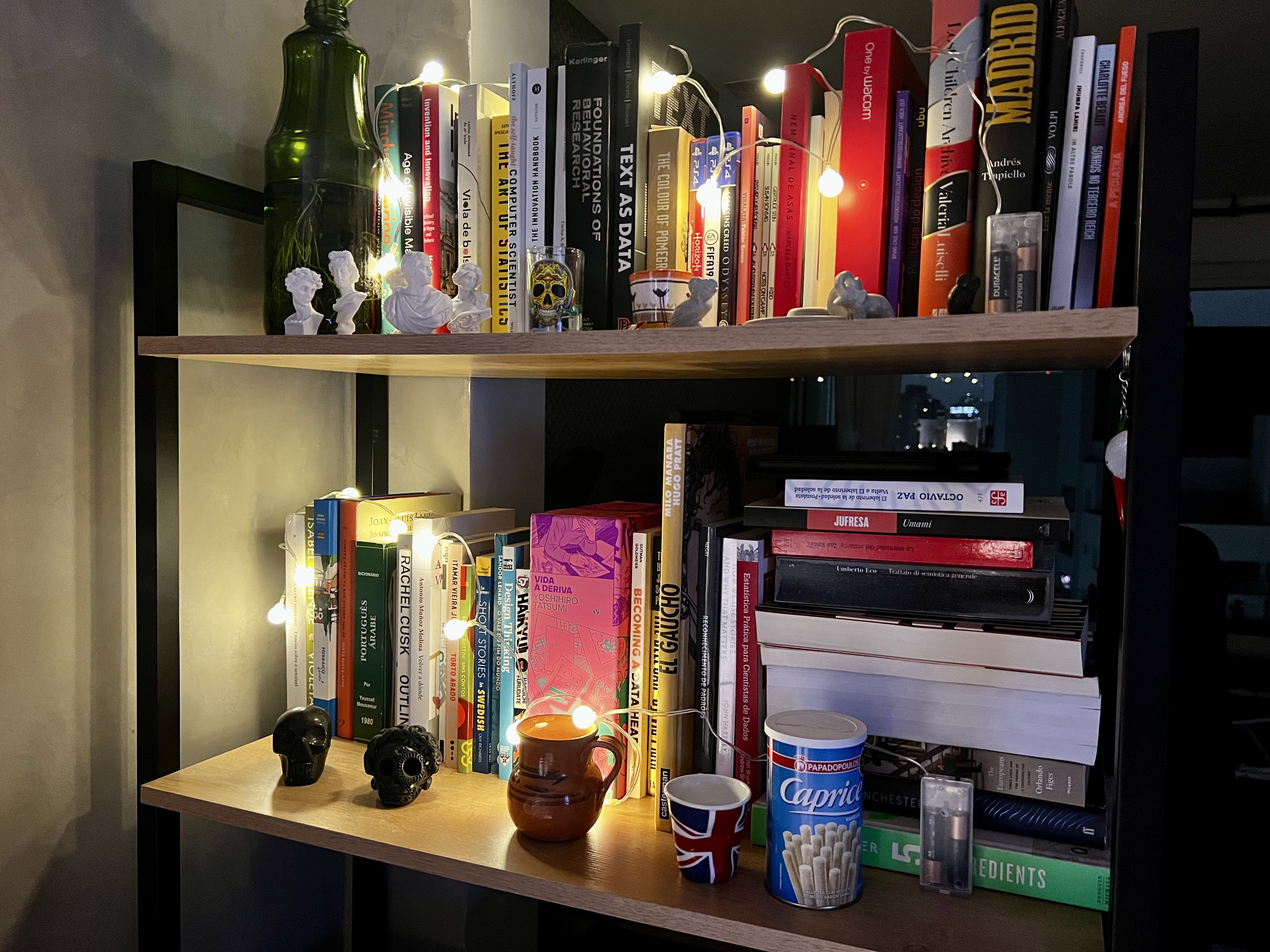Media Diet

Image courtesy of GS
A series exploring the media “input” of a group of people — our commercial semiotician colleagues, from around the world — whose “output” we admire.
São Paulo…
SEMIOVOX
What work of nonfiction (old or new) would you recommend to someone trying to make sense of today’s world?
GIANLLUCA SIMI
I’ve recently picked up Timothée Parrique’s 2022 Ralentir ou périr : l’économie de la décroissance — published last year in English as Slow Down or Die: The Economics of Degrowth. I must say this book is rather infuriating; not because of the author himself or the arguments he makes but, rather, because it exposes a most obvious lie we’ve been telling ourselves for the past century: there’s no such thing as endless economic growth! Despite the urgency of the matter in hand, Parrique makes sober yet unquestionable arguments about both consequences and threats of organising our values, labour, and even our laws according to the imperative of infinite growth. “Growth” has become a mantra, repeated ad nauseam to the point of becoming virtually meaningless. It’s an ideology instilled into every industry, every sector — as well as our minds, as both individuals and professionals, to the point at which we’ve come to “manage” ourselves through the language of “spreadsheet managerialism”: we “metrify” our body (like sleep hours, calorie intake, deficit and surplus), we keep track of our “performance” over time, we compare ourselves to others. I believe this is a very interesting read for anyone trying to make sense of the world today because it unveils a very heavy, very cruel ideology that has colonised pretty much every aspect of our lives. And the worst part of it is that, even though Parrique calls for a “post-growth economy”, it’s still very difficult to imagine we’ll head towards anything like that anytime soon.
SEMIOVOX
What music do you listen to during a typical day?
GIANLLUCA SIMI
I listen to some form of reggaeton or so-called “Latin pop” every single day. I’m sure this would send shivers down a lot of people’s spines, but I really like it: I like the beat, the melody, the history — though, admittedly, not always the lyrics. I started listening to it some ten years ago, as I prepared to go into the field in Uruguay: as Brazilians, we consume a lot of US culture and then our own, but we’re somewhat isolated from the rest of Latin America, so it was a way for me to cross that bridge, so to speak. And it led me to many other places: from listening to reggaeton, I then went on to gallivant around a whole “new world” of musical culture in Latin America and the Iberian Peninsula: Rosalía, Las Grecas, María José Llergo, Natalia Lafourcade, María Becerra, Vetusta Morla, Blaumut, Amaral, José Pinhal, Carminho… these are only a few of the artists I started listening to after my adventures on Mr Worldwide’s turf. So my big takeaways from this are: one, not liking something just because it’s popular is a capital sin for anyone involved with cultural work (semioticians, analysts, strategists, etc.); second, any popular expression is part of a much wider, much more complex web of influences, rituals, and values. But you have to hit play first! I mean, you are allowed not to like it, but you’re also allowed to enjoy it. Your credentials are not going to burst into flames if you do.
SEMIOVOX
Anything else you’d like to share?
GIANLLUCA SIMI
This is something I’ve argued for many years now: the media industry’s future depends on moving beyond the overrepresentation of US voices and stories prevalent since the mid-20th century. Whilst technology now enables wider and better media creation, our screens remain saturated with US narratives. Audiences increasingly seek stories that reflect their own cultures but that also reflect other cultures; we’re eager to learn more about “the rest of the world”. And this is a shift that Hollywood is only somewhat addressing. However, a major challenge remains: the industry excels at making US stories that travel globally, and local stories for local audiences (e.g., a Mexican series popular only in Mexico), but struggles immensely to create non-US local stories with global reach. Despite breakout hits like Squid Game and Money Heist, these are very much still the exception. Take LOL (Last One Laughing): it thrives in numerous local adaptations, but none travel beyond their borders, unlike universally consumed US shows like Modern Family. In sum, the industry must prioritise what I call 3C, i.e. “cross-cultural carry”: the ability of a media product to transcend its primary target audience. And this requires significant cultural research, in the spirit of Goethe’s “world literature” (Weltliteratur), but for modern media. From a business perspective, relying primarily on US content is simply unsustainable; global players must broaden their horizons.
MEDIA DIET: GIANLLUCA SIMI (Brazil) | HIBATO BEN AHMED (France) | MARIE LENA TUPOT (USA) | EUGENE GORNY (Thailand) | YOGI HENDLIN (Netherlands / USA) | INKA CROSSWAITE (Germany / South Africa) | SÓNIA MARQUES (Portugal) | ĽUDMILA LACKOVÁ BENNETT (Czechia) | BRIAN KHUMALO (USA / South Africa) | JIAKUN WANG (Shanghai) | FRANCISCO HAUSS (China / Mexico) | ASHLEY MAURITZEN (England) | STEFANIA GOGNA (Italy) | BECKS COLLINS (England) | ANTJE WEISSENBORN (Germany) | MARIANE CARA (Brazil) | MARTHA ARANGO (Sweden) | PAULINA GOCH-KENAWY (Poland) | COCO WU (Singapore / China) | JOSH GLENN (USA) | JENNIFER VASILACHE (Switzerland) | ANDREA BASUNTI (England) | SARAH JOHNSON (Canada) | VICTORIA GERSTMAN (Scotland) | MARIA PAPANTHYMOU (Greece).
Also see these global semio series: MAKING SENSE (Q&As) | SEMIOFEST SESSIONS (monthly mini-conferences) | COVID CODES | SEMIO OBJECTS | COLOR CODEX | DECODER (fictional semioticians) | CASE FILE | PHOTO OP | MEDIA DIET | TATTOO YOU (semioticians’ tattoos).

